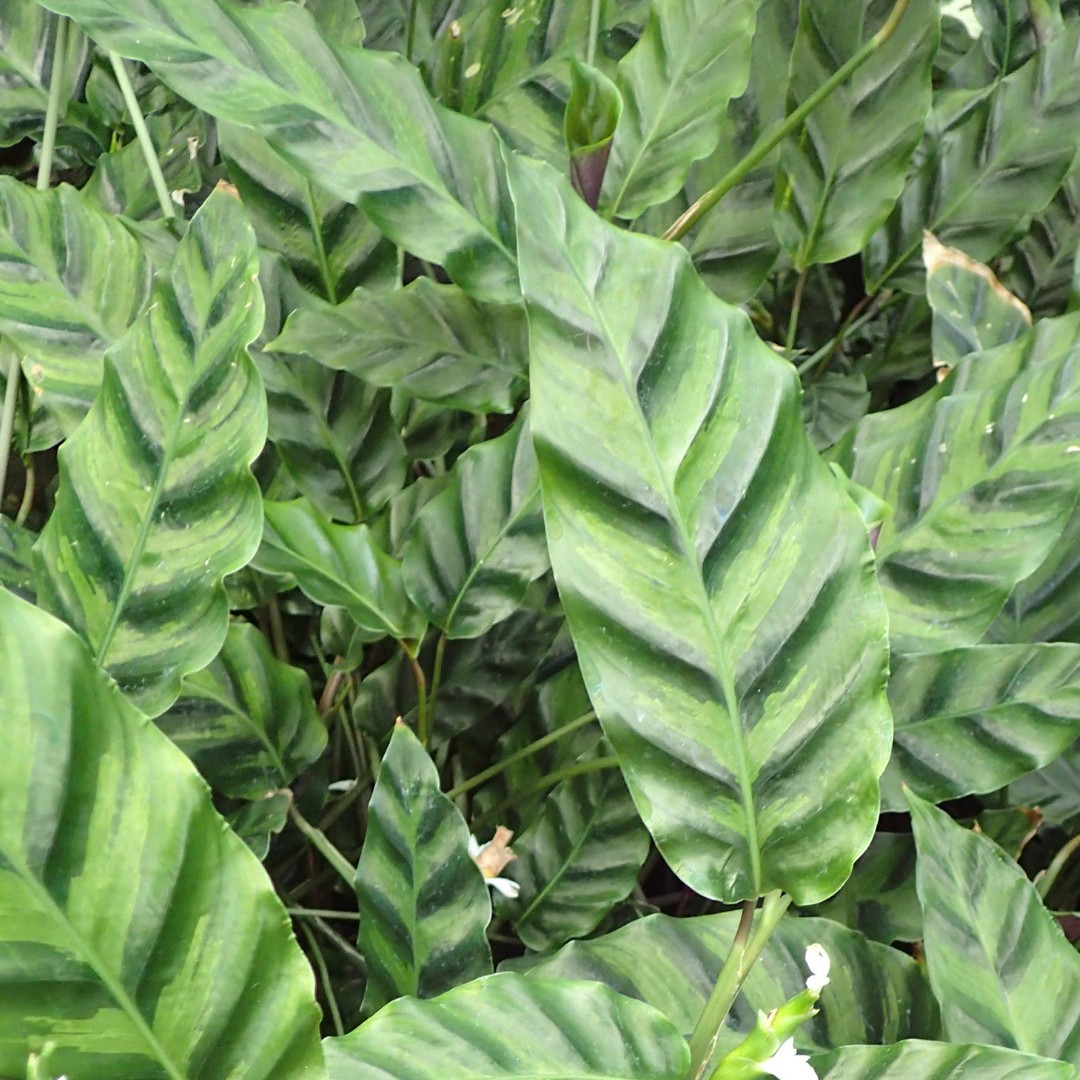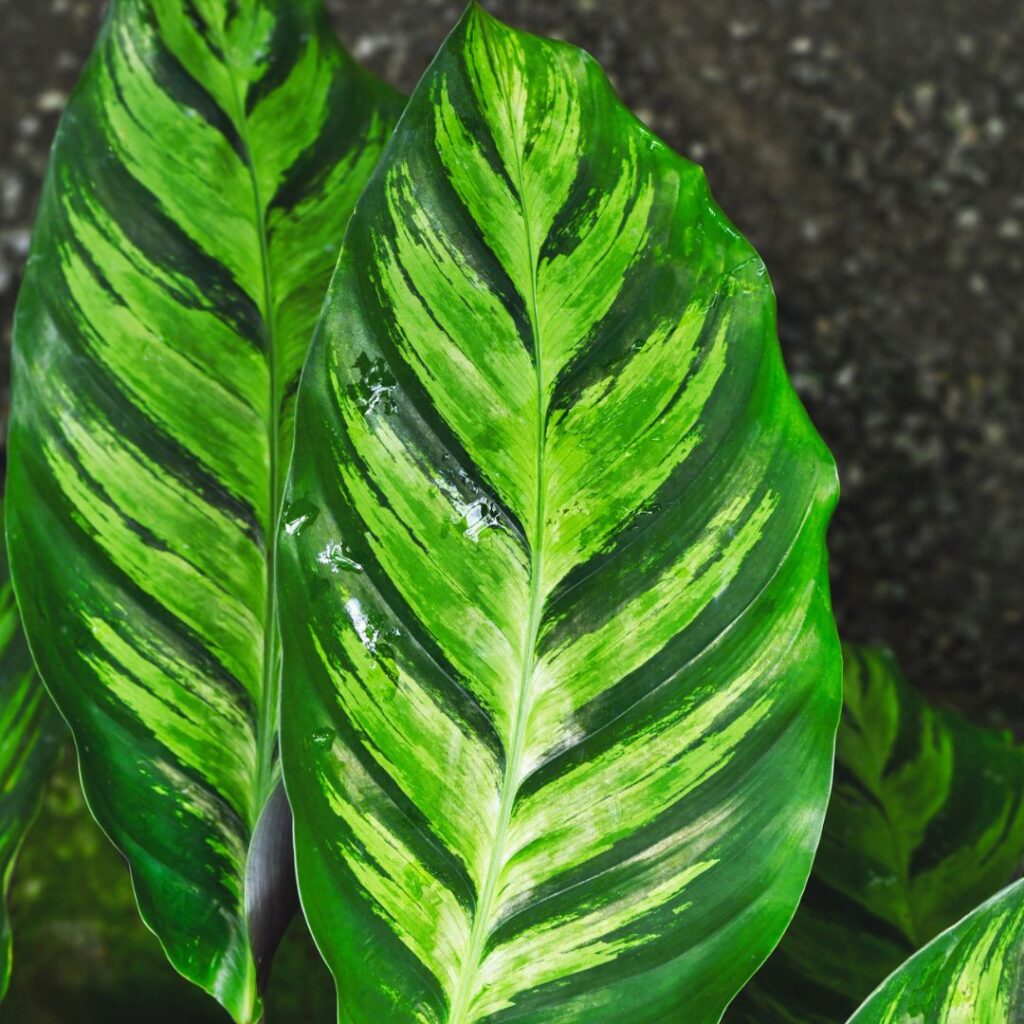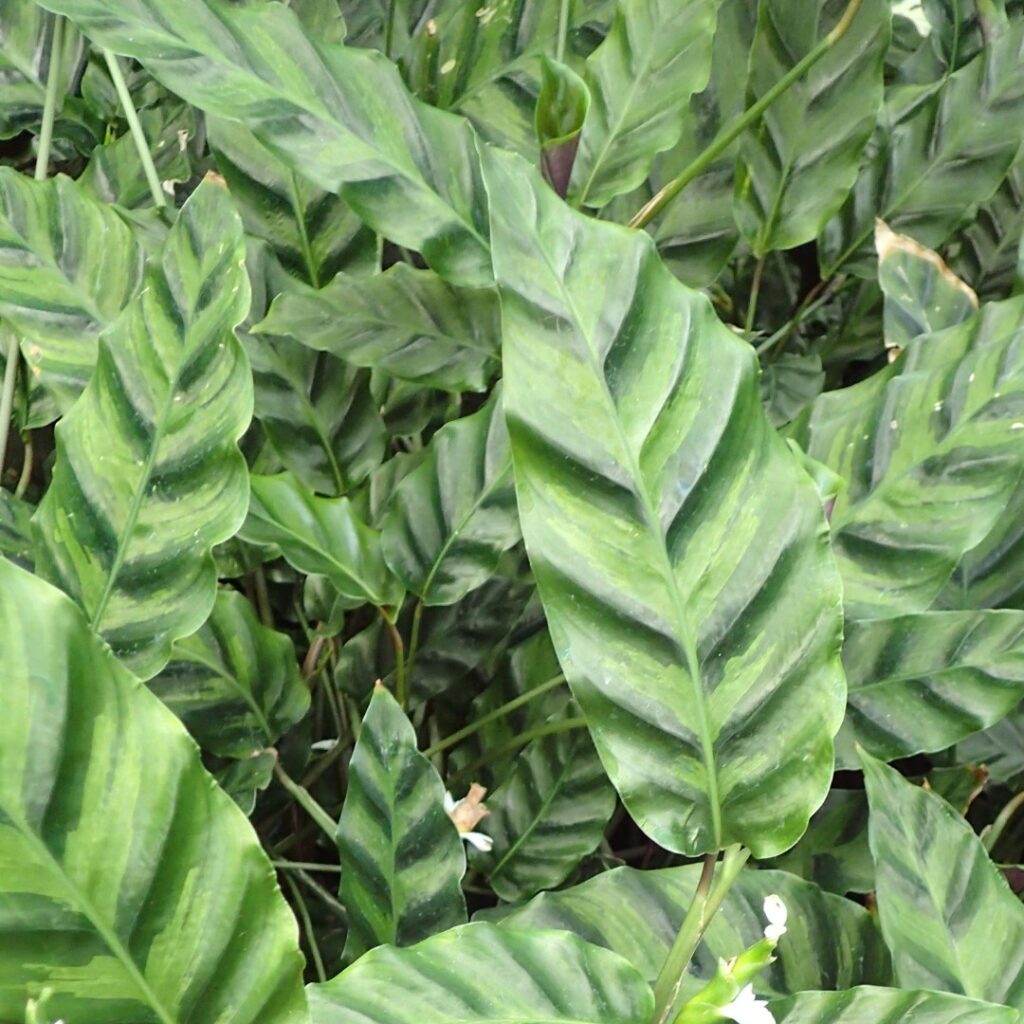
Calathea Louisae
Welcome to our guide to Calathea Louisae care, covering all you need to know about care and propagation. The key to Calathea Louisae care is to keep it humid and only water it with filtered tap water.
Calathea Louisae Care Summary
| Light needs: | Medium to bright indirect sunlight. |
| Watering needs: | Keep soil moist but not wet. Check the soil twice a week. |
| Fertilizer: | A balanced plant feed every 3 or 4 weeks in spring and summer. |
| Soil: | Add perlite to a good potting compost 20% to 80%. |
| Humidity: | 60-70%. |
| Temperature: | 18-28°C (64-82°F). |
| Where to buy: | Try our list of Rare Plant Shops. |
| Other names: | Goeppertia louisae. |
| Common issues: | Lack of humidity causing leaf curling and crispiness. |
Introduction
Calathea louisae aka goeppertia louisae is a striped light and dark green house plant that grows naturally in Brazil.
See also: Pink Syngonium, Geogenanthus Ciliatus, Rhaphidophora Hayi Care, Calathea Rufibarba, Prayer Plant Leaf Curling.
Light Needs
No direct sunlight, but give it as much indirect sunlight you can. It will be ok in medium light, but will grow best in brighter light. I would keep them in an East- or West- facing window.
How Often To Water Calathea Louisae
You want to keep the soil moist but not wet. So check the soil twice a week and water the plant if the top third of the soil is dry.
They can be prone to fungal infections so try not to wet the leaves.
Tip: make sure you tip out all excess water so the plant does not get water logged. Make sure you just filtered water. I use a brita water filter and let it stand over night, they hate hard water and can be really fussy about it.
Fertilizer
Feed them with a balanced plant feed every 3 or 4 weeks in spring and summer. Always be cautious when diluting your fertilizer and over-dilute so you don’t give the plant a fertilizer burn.
Soil
They like a really light, airy soil, that is rich, good quality and drains well. Add perlite to a good potting compost if you like, make sure it has about 20% perlite to 80% potting compost.
When to Repot Calathea Louisae
Check the roots each year to see if they are getting crowded and move the plant to a bigger pot if needed. A good time to check is early spring so you know they have enough space to grow over the warmer months.
Humidity
60-70% is good for them, they really thrive in higher humidity levels, and they can dry out and crisp up if not given enough. They like high humidity, but make sure there is circulating air, to avoid fungal issues.
Tip: Keep them humid, aim for 60% in the day and they’ll be ok with a bit less at night. You can buy a humidity meter (affiliate link) to keep an eye on maximum and minimum levels.
Temperature
Aim for 18-28°C (64-82°F) during the daytime, and try to keep them above 10°C (50°F) at night.
How to Propagate Calathea Louisae
Propagate them by division at the base when they are big enough. When they start to mature they can spread out, at which point you can divide them. Take the plant out of its pot and shake off as much soil as possible. Then divide off the smaller plants, be as careful as you can to avoid damage to the stems or root system. Then you can plant each plant in it’s own pot and put the main plant back in its original pot.

Calathea Louisae USDA Zone
They can live outdoors in zones 8 to 11.
Calathea Louisae Vs Albertii
The louisae and albertii are very similar but have slightly different leaf patterns, the albertii has more shaded patterning and more tones of tight green down the center..
Calathea Misto Vs Louisae
Th misto is a type of louisae. The misto has a a lighter color down the center of the leaf.
Is Calathea Louisae Toxic To Cats?
It is non-toxic to dogs and cats.
Calathea Louisae Size
They can get up to a meter tall (40 inches), but normally half that. And reach maturity in 2 to 4 years.
Other Names
Goeppertia louisae
Where To Buy
Try our list of Rare Plant Shops.
FAQs and Common Problems
Lack of humidity causes leaf curling and crispiness, these plants must be kept humid. Mist them if you cannot provide constant humidity.
Tip: They can shed old leaves even when healthy, just cut them off at the base if they go brown, don’t worry too much.
Additional Resources
Buy: we recommend a digital thermometer hygrometer (amazon affiliate link) to measure humidity.
Links:
- More info on the Wikipedia page.
- More info on the Kew Gardens plant page.
- More info on the RHS plant page.
Other Articles You Might Like
There you have it, here ends our guide to this beautiful plant. You might also like our other articles:
Pink Syngonium, Geogenanthus Ciliatus, Rhaphidophora Hayi Care.
Please follow us on Instagram and Pinterest for regular plant updates and occasional plant giveaways.





